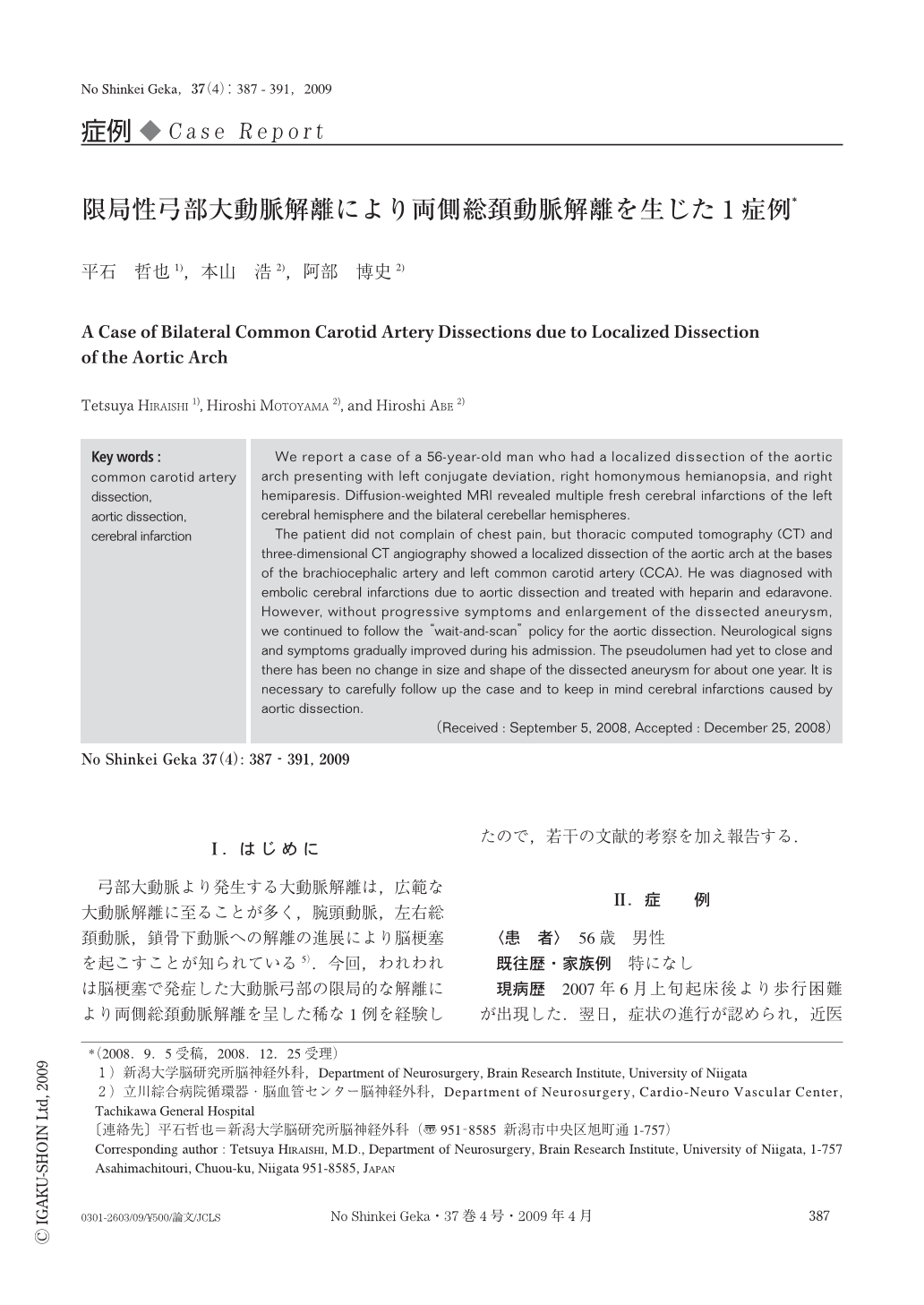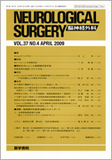Japanese
English
- 有料閲覧
- Abstract 文献概要
- 1ページ目 Look Inside
- 参考文献 Reference
Ⅰ.はじめに
弓部大動脈より発生する大動脈解離は,広範な大動脈解離に至ることが多く,腕頭動脈,左右総頚動脈,鎖骨下動脈への解離の進展により脳梗塞を起こすことが知られている5).今回,われわれは脳梗塞で発症した大動脈弓部の限局的な解離により両側総頚動脈解離を呈した稀な1例を経験したので,若干の文献的考察を加え報告する.
We report a case of a 56-year-old man who had a localized dissection of the aortic arch presenting with left conjugate deviation, right homonymous hemianopsia, and right hemiparesis. Diffusion-weighted MRI revealed multiple fresh cerebral infarctions of the left cerebral hemisphere and the bilateral cerebellar hemispheres.
The patient did not complain of chest pain, but thoracic computed tomography (CT) and three-dimensional CT angiography showed a localized dissection of the aortic arch at the bases of the brachiocephalic artery and left common carotid artery (CCA). He was diagnosed with embolic cerebral infarctions due to aortic dissection and treated with heparin and edaravone. However, without progressive symptoms and enlargement of the dissected aneurysm, we continued to follow the “wait-and-scan” policy for the aortic dissection. Neurological signs and symptoms gradually improved during his admission. The pseudolumen had yet to close and there has been no change in size and shape of the dissected aneurysm for about one year. It is necessary to carefully follow up the case and to keep in mind cerebral infarctions caused by aortic dissection.

Copyright © 2009, Igaku-Shoin Ltd. All rights reserved.


